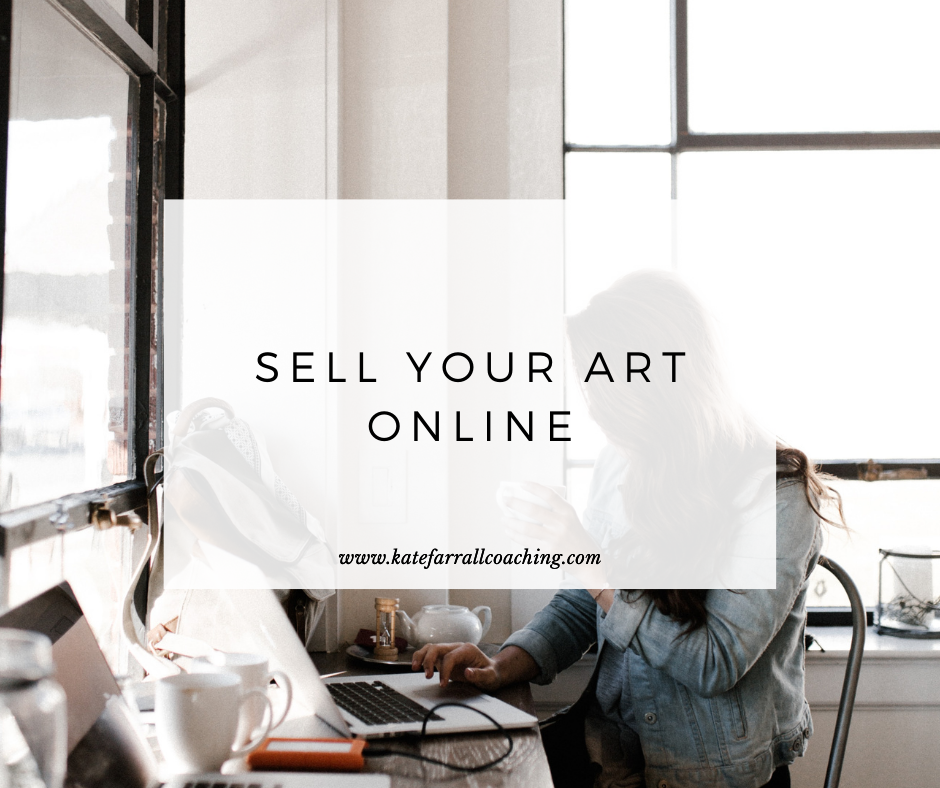There are many ways to make money selling your art. This can be through commissions, in person, or online.
You don’t need to be a technical wiz to participate in online art sales. There are a variety of options I’m going to share with you that have made it easier than ever to sell your work.
One of the biggest benefits of selling through the internet is that you can reach a larger audience than you would in person.
Patreon
Patreon is a creative and fun way to engage your art fans and build a community that supports what you do financially.
While Patreon is a membership platform, you can choose to include discounts and incentives towards art sales as a benefit but it’s not mandatory. Your supporters will still sign up for a membership level even if they aren’t getting pieces of art as a perk.
In my article, Should Visual Artists Use Patreon, I mention Annie Hejny and how I helped her set up the offerings in her membership levels. Annie offers a one-time discount code for her online shop, allows pledges to count towards commissioned artwork, and at a higher support level, she will create an original piece of art for her members once a year. In all of these examples, you can see how creatively Annie has set up her Patreon account to generate art sales.
Etsy
Etsy is a community where artists and creators sell their art. It’s an easy platform to use and it sets up all of the online sales mechanisms for you. As a merchant, there are fees but the for many the convenience is worth it.
As a marketplace, it’s a wonderful opportunity to get found by buyers as well as be highlighted by Etsy. This is great because it gets new eyes on your work.
Saatchi Art
As the world’s leading online gallery, this is an example of a space focused on selling fine art. They make it easier for buyers to find art they love.
Saatchi Art ships globally, has a satisfaction guarantee, and offer complimentary art advisory services making it a great space for buyers to feel confident in their buying experience. This can make you confident as an artist that you’ll be making strong connections with serious art collectors, curators, and interior designers. You can even sell art commissions through Saatchi Art.
As an artist, they have good commission rates where you’ll receive 65% of sales. Saatchi Art reinvests their portion of the commission into promoting your art through paid ads and social media, artists of the day highlights, editorial features, and more.
You pack your art and provide the shipping materials. Saatchi Art figures out the shipping costs and the buyer pays it. This is a great online selling space for fine artists to investigate.
Your Website
You can create a shop on your website. By owning your own site, you will pay less transactional fees, however, you will be responsible for technical fixes and updates on your own or have to hire someone to support this part of your practice.
If your website doesn’t offer a shop, you’ll need to incorporate a third-party shopping platform such as WooCommerce, Square, Shopify, Big Cartel, etc. This organizes your inventory, processes sales with taxes, and figures out shipping costs.
A perk to some of the shopping platforms is that you can get credit card swipers or an app to bring to in-person events and it will update your inventory in real-time. This means that if you release a new series of work, you can sell it both online and during your in-person event without worrying about selling the same piece twice.
Social Media
Many social media platforms have built-in shopping to make it fast and easy for you to sell and for your buyers to collect your art.
You can promote your products either with a link in the description or tag it on a graphic. For example, you can tell when someone has a shop on Instagram because there is a link to it in their profile and any shoppable posts are shown with a small shopping bag icon.
On some social media platforms such as Facebook or Instagram, you can connect your third-party shopping platform (e.g. Square) with your Facebook or Instagram shop. This way it tracks inventory and income all in one spot so when you make an Instagram sale, the art available on your website via the Square shop will be instantly updated as well.
Setting up a stand-alone shop or catalog where people can buy directly from you without leaving the platform makes it convenient for your buyers and improves your chances of making a sale.
Which Will You Choose?
In addition to these, there are more platforms out there. If you do your research, the opportunities can be limitless as new online marketplaces are opening every day. Local shops and galleries are now going online, NFTs are becoming popular, and there are much larger, popular online spaces that give a variety of options for selling your art online.
No matter where you’re selling your work online, remember that you need to drive traffic to your shop by sharing your art and the experience your buyer will get every time they see it.
